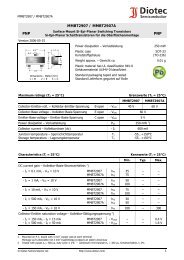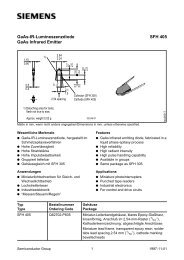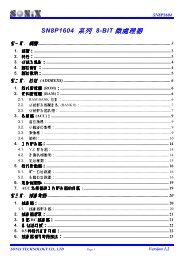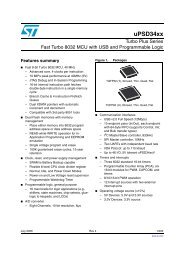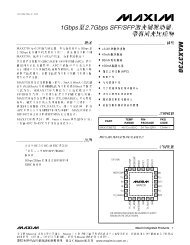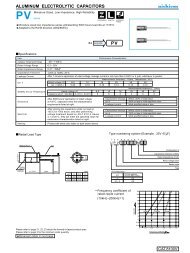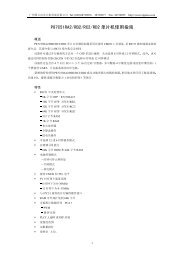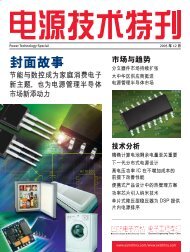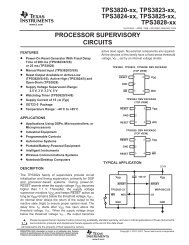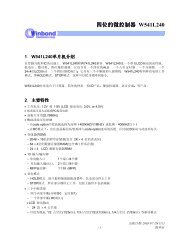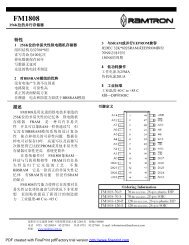AN2120: Connecting an M68HC08 Family Microcontroller to an ...
AN2120: Connecting an M68HC08 Family Microcontroller to an ...
AN2120: Connecting an M68HC08 Family Microcontroller to an ...
You also want an ePaper? Increase the reach of your titles
YUMPU automatically turns print PDFs into web optimized ePapers that Google loves.
Application Note<br />
The payload contains the negotiation options or the rest of the IP packet.<br />
Finally, a 2-byte checksum or frame check sequence (FCS) which is<br />
computed over the entire unescaped packet with the help of a lookup<br />
table defined in RFC 1662.<br />
In a PPP session, both peers have no distinction of who is the server <strong>an</strong>d<br />
who is the client. Both end-points c<strong>an</strong> carry up a negotiation equally.<br />
However, for practical purposes, this application note defines a PPP<br />
server as the end-point located <strong>an</strong>d h<strong>an</strong>dled by the ISP <strong>an</strong>d a PPP client<br />
as the end-point that initiates the connection. Another way <strong>to</strong> define a<br />
PPP server is the end of the link that requires password authentication,<br />
that is the authentica<strong>to</strong>r.<br />
Usually, PPP sessions are started by a client dialing up <strong>an</strong> ISP. To start<br />
a session, the PPP client must establish, maintain, <strong>an</strong>d terminate a<br />
physical connection with the ISP.<br />
The overall process is illustrated in Figure 15.<br />
PPP CLIENT ESTABLISH A MODEM CONNECTION NETWORK ACCESS SERVER<br />
ESTABLISH A PPP LINK WITH LCP<br />
USER AUTHENTICATION<br />
SEND USER ID AND PASSWORD WITH PAP<br />
AUTHENTICATION ACK<br />
EXCHANGE NETWORK DATA<br />
DATA HEADER PPP<br />
Figure 15. Creating a PPP Link with <strong>an</strong> ISP<br />
<strong>AN2120</strong><br />
18 MOTOROLA<br />
PPP<br />
HEADER<br />
DATA



